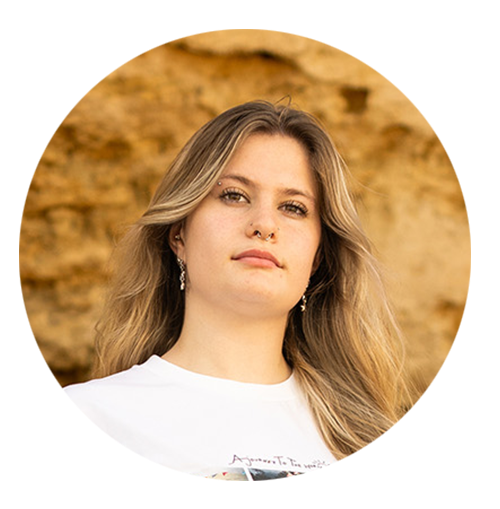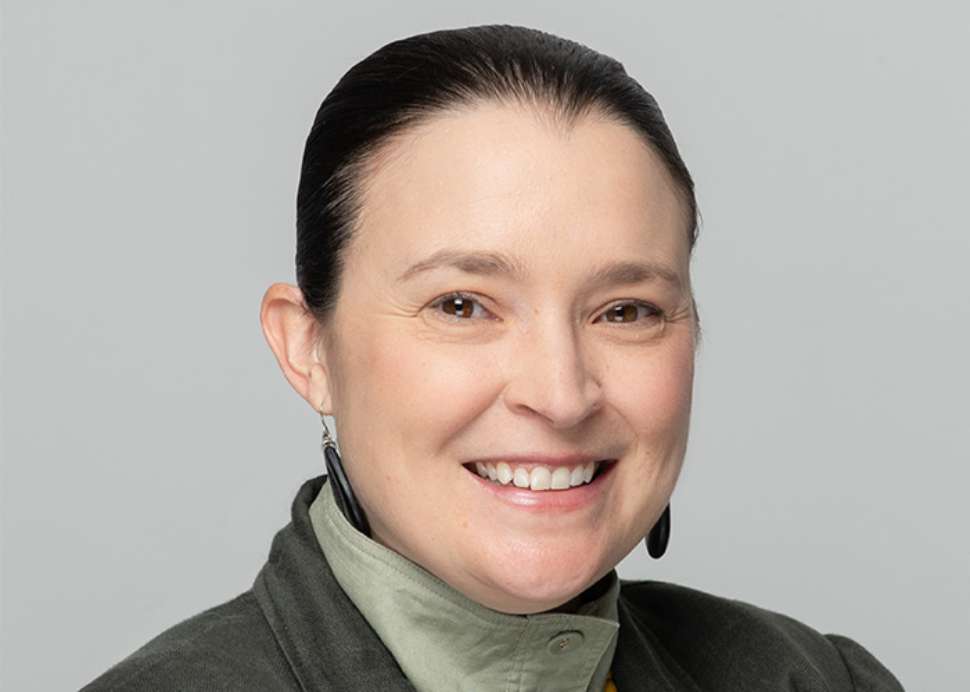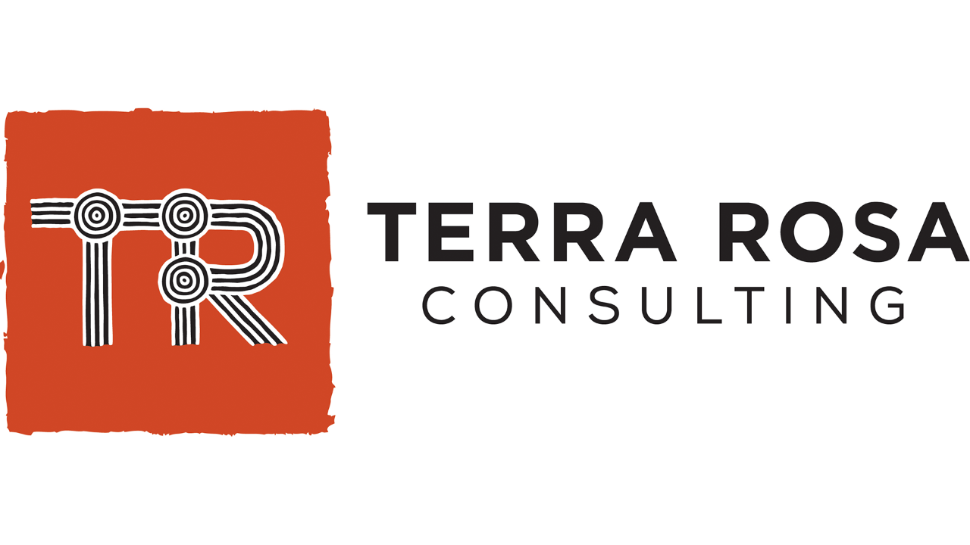Why study archaeology?
An exciting career is waiting for you. You will gain in-demand skills, including how to locate, record and excavate sites and artefacts using the latest technology. You could work in Australia or around the world, pursuing opportunities in government, commercial heritage firms, community organisations, mining companies, museums, parks and more.
We offer the first and only
dedicated archaeology degree in SA
What jobs can an archaeology degree lead to?
Archaeologists are highly sought-after, with most employment opportunities coming from within the booming cultural heritage industry.
From undertaking archaeological surveys in the remote iron ore landscape of Western Australia’s Pilbara region, carrying out salvage excavations of 19th-century homes in the middle of Adelaide, or developing cultural heritage management and conservation plans for Australia’s historic and Indigenous sites, archaeologists are urgently needed to fill these roles.
SA's only dedicated degree
With over 20 years of history, we offer the state's longest-running archaeology degree
Real-world experience
You'll learn the tools of the trade through exciting field work experiences
Become an archaeologist
Most experienced workers in archaeology earn upwards of $146,000 per year*
*2024 average pay by experience, payscale.com
SA's only dedicated degree
With over 20 years of history, we offer the state's longest-running archaeology degree
Real-world experience
You'll learn the tools of the trade through exciting field work experiences
Become an archaeologist
Most experienced workers in archaeology earn upwards of $146,000 per year*
*2024 average pay by experience, payscale.com
Why study archaeology at Flinders?
- Flinders' Bachelor of Archaeology is South Australia’s only dedicated Archaeology degree
- Our teaching and research specialists are internationally-renowned
- Choose from specialised streams in archaeological science, ancient civilisations, maritime, historical and Indigenous archaeology
- Through our connections to industry, we offer opportunities to learn: Flinders works with multiple cultural heritage organisations around Australia
- Expect hands-on learning opportunities, including exciting field work experiences.

“
The facilities at Flinders are amazing for archaeology. There's so many different labs. And the lecturers and professors are amazing... the experience and knowledge they have is really useful.
Luci Natalier, Bachelor of Archaeology
”
We're connected to industry
Start an exciting career
This course offers a gateway to a diverse range of careers. From safeguarding Australia's diverse cultural heritage, to investigating human burials and skeletal remains, archaeology graduates are highly sought after in sectors such as conservation, mining and energy, museums, national and state-run parks, Indigenous-run organisations and more.
Potential occupations include:
- Archaeologist
- Cultural Heritage Specialist
- Museum Curator
- Cultural Heritage Manager
- Museum Collections Manager
- Heritage Officer
- Heritage Advisor
- Author or Content Writer
- Digital Archaeologist
- Researcher
Potential employers include:
- Cultural heritage consulting companies
- Mining, energy and services companies
- Indigenous-run organisations or corporations
- Museum sector (local, state/territory, national)
- Government departments dealing with cultural heritage
- National and state-run parks
- Conservation organisations, such as the National Trust
- Universities
Potential occupations include:
- Archaeologist
- Cultural Heritage Specialist
- Museum Curator
- Cultural Heritage Manager
- Museum Collections Manager
- Heritage Officer
- Heritage Advisor
- Author or Content Writer
- Digital Archaeologist
- Researcher
Potential employers include:
- Cultural heritage consulting companies
- Mining, energy and services companies
- Indigenous-run organisations or corporations
- Museum sector (local, state/territory, national)
- Government departments dealing with cultural heritage
- National and state-run parks
- Conservation organisations, such as the National Trust
- Universities
Meet the experts
Our teaching and research staff are experts in their professions and well-connected to industry.

Amy Roberts, a Matthew Flinders Professor, is an archaeologist and anthropologist who is committed to meaningful and long-term collaborations with Traditional Owners. She primarily works with Aboriginal communities in South Australia. In particular she has worked closely with Aboriginal peoples from the River Murray and Yorke Peninsula regions.
Amy is a Future Fellow for the ARC project 'From Baskets to Boomerangs: Lifeways, Knowledges and Colonial Legacies', the lead investigator for the ARC Linkage projects 'Rockshelters and Rock Art in the River Murray Gorge: New Data and Syntheses' and 'White People had the Gun: Interrogating the Riverland's Colonial Frontier' and is a CI on the following Linkage, Discover and LIEF projects 'Co-designing Aboriginal Digital Museology Frameworks in the Southern Gulfs', 'Ochre Archaeomicrobiology', 'A National Facility for the 3D Imaging of the Near Surface' and 'Australian Microarchaeology and Palaeosciences Facility (AusMAP)'.
Prior to her appointment as an academic at Flinders University Amy worked as an expert to the Federal Court for a number of native title cases – including for the First Peoples of the River Murray and Mallee Region which achieved a successful determination. She continues to work in a consulting capacity on native title, Aboriginal heritage and stolen generations matters. She is currently a member of the ARC's College of Experts.
Claire Smith is an anthropological archaeologist whose research focusses on how Indigenous knowledges can enrich archaeological theory, method and practice.
With Wiradjuri archaeologist, Kellie Pollard, Claire is Co-Lead of the Australian Hub for the Center for Braiding Indigenous Knowledges and Science. Claire's deep research into Aboriginal ways of being, knowing and doing is based on long-term relationships of trust. She has worked with Aboriginal people in the Barunga region, Northern Territory, every year since 1990, with Ngadjuri people since 1998, and with Adnymathahna people since 2020.
Claire was the principal supervisor for the first two Aboriginal people to be awarded a PhD in archaeology: Dr Chris Wilson in 2017 and Dr Kellie Pollard in 2019.
As the twice-elected President of the World Archaeological Congress (2003-2014), Claire is dedicated to advancing academic knowledge by expanding opportunities for Indigenous peoples and scholars from countries with low exchange rates.
Dr Ian Moffat is an archaeological scientist who mainly works with geological techniques. His principal research focus is examining the effect of climate variation on human evolution based on sediments from archaeological rock shelter sites in South Africa, Indonesia and Australia. Applying methods including geophysics, sediment analysis and isotope geochemistry, he is developing new climate proxies and understanding the depositional history of these sites.
A related area of interest is the isotopic and trace element analysis of biogenic materials (including tooth, bone and otoliths) to examine mobility, diet, maternal behaviour and climate. This includes the analysis of the mobility of animals in Palaeolithic France and Israel, the maternal behaviour of early hominins and the diet and mobility of colonial era migrants in Adelaide, using recent developments in the field of laser ablation analysis to undertake spatially resolved in-situ measurements.

Professor Liam Brady is originally from Canada with West Indian (Trinidad & Tobago), Venezuelan and Irish heritage. He completed his undergraduate studies in sociocultural anthropology at Wilfrid Laurier University (Waterloo, Ontario) and was then awarded a scholarship to travel to Monash University to undertake his PhD studies on the rock art of the Torres Strait Islands.
Prior to joining Flinders University in 2020, he was a tenured Senior Lecturer and Associate Professor at the Monash Indigenous Studies Centre (Monash University), and an ARC Postdoctoral Fellow at the University of Western Australia’s Department of Archaeology.
Over the last 20 years he has crafted his research program around multidisciplinary approaches to Indigenous cultural heritage with a focus on integrating Indigenous knowledge into understanding the "archaeological record" (rock art, stone artefacts, rockshelter occupation sites etc.).

Martin Polkinghorne is an Associate Professor in Archaeology at Flinders University. He completed his PhD at The University of Sydney focussing on the people and technology that made the temples of Angkor. Between 2011 and 2014 he led an Australian Research Council (ARC) Discovery project on pre-modern craft economies in Cambodia. This initiative discovered the first historic bronze foundry known in Southeast Asia and continues to excavate at Angkor.
Martin is Lead Chief Investigator of an international consortium on the ARC Linkage Project: Reuniting orphaned cargoes: Underwater Cultural Heritage of the Maritime Silk Route. This project aims to discover the cultural value of the largest Southeast Asian ceramic collections in Indonesia and Australia with archaeological science and to preserve the underwater cultural heritage of our region for future generations.
Mike is a geoarchaeologist with over 20 years’ experience working in both academic and commercial environments. His primary area of expertise is the study of archaeological site formation processes and the reconstruction of palaeoenvironments at various scales through the study of site micro- and macro-stratigraphy, geological sequences and geomorphological landforms. He is interested in reconstructing changes in geomorphological systems (e.g., river behavioural change) and the implications of these dynamics on humans (and hominins) living in—and interacting with—these landscapes. He has worked widely in Europe, North Africa (Sudan, Libya), southern Africa (South Africa, Lesotho), Middle East (Oman, Bahrain, UAE, Saudi Arabia) and Southeast Asia (Malaysia, Vietnam, Indonesia, Myanmar, East Timor).
Mike is currently an ARC Future Fellow, leading a project that will reconstruct the ground conditions present at various Late Pleistocene sites across Southeast Asia during periods of site occupancy and abandonment. He will use these data to gain a better understanding of the environmental conditions preferred by modern humans and other co-existing hominins as they dispersed through the region and ultimately onto the Australasian mainland.

Growing up in the Netherlands, a nation famed for its maritime heritage, Wendy van Duivenvoorde became fixated on the sea. Drawn to archaeology at university, she jumped at the opportunity to volunteer on dives at maritime archaeological sites, sealing her fate as a scholar captivated by the histories of the deep.
Dr van Duivenvoorde came to Australia to be involved in the study of the Batavia, a Dutch East India Company vessel built in Amsterdam that was wrecked on its maiden voyage on the West Australian coast, at a time when the waters of the southern hemisphere were largely uncharted – and 150 years before Captain Cook mapped Australia’s eastern coastline. The loss of the Batavia and the trail of mutiny and murder that followed the disaster fostered huge interest in the excavation of the wreck after it was rediscovered in 1963.
Frequently asked questions
This depends on which Flinders Archaeology course (or major) you choose, but you can expect a hands-on and multi-disciplinary degree no matter which path you take! Find out more:
We're home to one of the top-ranked and largest archaeology departments in Australia. Not only this, but we work extensively with industry partners to offer a wide-ranging course, covering the big issues in understanding human behaviour past and present. Our staff are award-winning, internationally recognised archaeologists who work across the globe, from the shores of the Mediterranean and the jungles of Southeast Asia, to the heart of Australia’s arid deserts.
At Flinders you can combine your interests with speciality topics in Australian and world archaeology, human evolution, ancient seafaring and the archaeology of First Peoples, including cutting-edge scientific and imaging techniques. Satisfy your own curiosity, while at the same time creating a degree that will prepare you to practice successfully as a professional archaeologist, curator or cultural heritage manager in Australia or abroad.
Once you've completed a Bachelor of Archaeology, you could complete a Bachelor of Archaeology (Honours) to become a professional archaeologist. Alternatively, you might decide to pursue an employment opportunity right after graduation: a bachelor's degree in archaeology will open countless doors for you across sectors, both locally and internationally.
Many of our Bachelor students also decide to undertake postgraduate studies with us and develop specialist skills through our outstanding Masters and PhD programs in fields such as geoscience, maritime archaeology and conservation.
Did you know that archaeologists are often consulted in relation to heritage buildings? Most career opportunities can be found in the cultural heritage industry, and it's a sector that is growing every year. Not only this, but you could find job opportunities in government, community organisations, mining companies, museums, parks and more.
Definitely. As South Australia's longest-running Archaeology department, we have deep connections with local, national and global industry: meaning you'll get up close with the best names in the profession.
Our archaeology staff have extensive experience working in the Cultural Resource Management sector both across Australia and internationally and our undergraduate program is designed to provide you with all the skills you need for employment.
![]()
Sturt Rd, Bedford Park
South Australia 5042
South Australia | Northern Territory
Global | Online
CRICOS Provider: 00114A TEQSA Provider ID: PRV12097 TEQSA category: Australian University
















